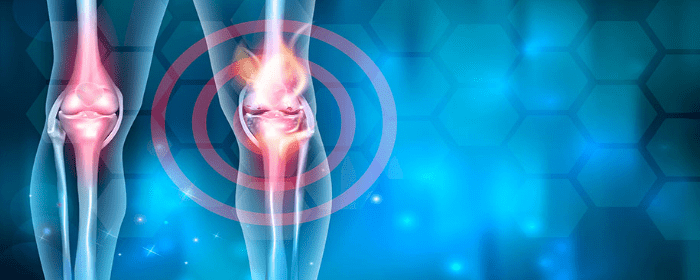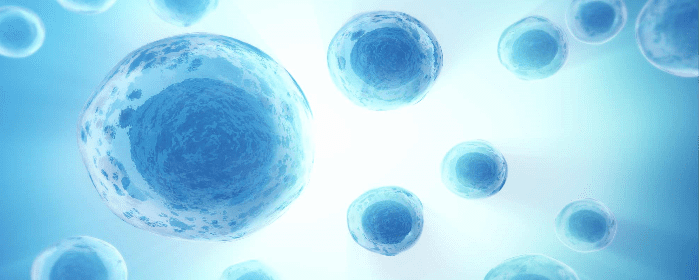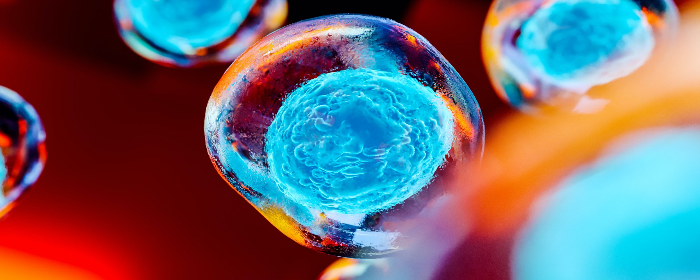
by admin | Nov 11, 2020 | Pulmonary Fibrosis, Mesenchymal Stem Cells, Stem Cell Therapy
Idiopathic pulmonary fibrosis (IPF) is a chronic and progressive disease of the lungs that causes fibrosis of the spaces between the air sacs. As the fibrosis gets progressively worse, the movement of the lungs is more and more restricted. In effect, patients with IPF find it harder and harder to breathe. Patients become short of breath almost constantly.
The “idiopathic” part of idiopathic pulmonary fibrosis means that the cause is unknown. We know that it mainly occurs in older people, usually to people between the ages of 55 and 75—but we don’t know why.
Eventually, most people with IPF will need supplemental oxygen for all activities. Supplemental oxygen may delay some of the consequences of IPF (e.g. pulmonary hypertension), but it is mostly used to help patients breathe more easily and get more oxygen into the blood.
Two antifibrotic drugs, nintedanib, and pirfenidone are approved for the treatment of patients with idiopathic pulmonary fibrosis. In some patients with mild to moderate disease, these drugs can delay the progression of IPF for weeks to months. Both drugs are associated with significant side effects and patients may stop taking them because of these adverse events. Even if patients can tolerate the drugs, they do not repair or rebuild lung tissue, so they only help to slow the progression.
Scientists have suggested an alternate approach; one in which an antifibrotic drug is given alongside a treatment intended to regenerate the lung tissue, namely, mesenchymal stem cells. They persuasively argue that mesenchymal stem cells can regulate the immune system by reducing the inflammation that occurs in idiopathic pulmonary fibrosis. Stem cells also differentiate into functional alveolar cells, i.e., the cells that are part of air sacs. Perhaps more impressively, bone marrow-derived stem cells had the same short-term therapeutic benefits as pirfenidone in mice with experimental IPF.
The authors do not advocate that stem cells should be used to replace the antifibrotic drugs, nintedanib, and pirfenidone, but they do suggest that stem cell treatment could be useful in combination with one of these drugs. They theorize that the antifibrotic drug can reduce symptoms, but the stem cell treatment may help also reduce symptoms but also slow down, stop, or even reverse the progression of the disease. More clinical work is needed, but since IPF is a terrible disease with no cure, that work will hopefully be done quite soon.
Reference: Chuang, Hong-Meng, et al. (2018). Mesenchymal Stem Cell Therapy of Pulmonary Fibrosis Improvement with Target Combination. Cell Transplantation. 2018; Vol. 27(11) 1581-1587.

by admin | Nov 7, 2020 | Osteoarthritis, Mesenchymal Stem Cells, Stem Cell Research, Stem Cell Therapy
Osteoarthritis is the most common form of arthritis. In osteoarthritis, the cartilage of the joints breaks down, bone spurs form, the synovial linings become inflamed, and the ligaments around the joint calcify. All of these pathological changes combine to cause joint pain, swelling, and stiffness. The breakdown of the joint also means that it does not function properly. The arthritic joint may “lock up,” “give out,” or simply not be able to move through its normal range of motion. Early in the disease, the pain of osteoarthritis may be brought on by movement. Later, the pain is more or less constant with severe pain flares.
Initially, the treatment for osteoarthritis is pain medications, exercise, braces, and physical therapy. Joint injections may be helpful for 4 to 6 weeks, but recent research suggests that repeated steroid injections may break down cartilage and speed up joint destruction. Unlike treatments for rheumatoid arthritis, there are no disease-modifying treatments for osteoarthritis. The disease tends to get worse over time until surgery is required. Joint replacement surgery is usually the treatment of last resort.
Since osteoarthritis is a degenerative joint disease, a reasonable approach to therapy is to try to rebuild or regenerate the joint tissues. This would not only stop the disease progression of osteoarthritis but perhaps even heal the damaged joint. For this reason, regenerative medicine, also known as stem cell therapy, is drawing the attention of many scientists who are looking for alternative therapeutic treatments for osteoarthritis.
Researchers tested the ability of mesenchymal stem cells to relieve pain and treat the damage of osteoarthritis. More specifically, they used the exosomes that the mesenchymal stem cells produce. Exosomes are tiny packets of substances like RNA and peptides that support tissue growth and repair. Exosomes contain most of the molecules that make mesenchymal stem cells helpful.
The scientists found that giving exosomes from mesenchymal stem cells to animal subjects with experimental osteoarthritis had some remarkable effects. Not only did the stem cell-derived treatment substantially reduce pain in the rats with osteoarthritis, but microscopic and molecular evidence also showed that the exosomes were able to repair cartilage in the affected joints. This is truly impressive when you consider that other treatments for osteoarthritis only reduce symptoms—they do not repair cartilage or stop the progression of the disease.
While this work will need to be replicated in human clinical studies (and that work has already begun), this is an exciting finding for the millions of Americans who struggle with osteoarthritis.
Reference: He, L., He, T., Xing, J. et al. Bone marrow mesenchymal stem cell-derived exosomes protect cartilage damage and relieve knee osteoarthritis pain in a rat model of osteoarthritis. Stem Cell Res Ther 11, 276 (2020). https://doi.org/10.1186/s13287-020-01781-w

by admin | Sep 16, 2020 | Mesenchymal Stem Cells, Rheumatoid Arthritis, Stem Cell Therapy
Rheumatoid arthritis causes chronic inflammation of multiple joints throughout the body. This joint inflammation eventually causes the cartilage and bone to break down, and the tendons and ligaments surrounding the joints stretch and become deformed. Consequently, people with rheumatoid arthritis experience pain and loss of function in affected joints.
Unfortunately, rheumatoid arthritis is not just a disease of joints. Rheumatoid arthritis also causes systemic inflammation. People with rheumatoid arthritis commonly experienced fevers, weight loss, and chronic fatigue. Many patients report being achy or stiff apart from joints directly affected by arthritis. Rheumatoid arthritis can cause bone loss, muscle weakness, skin lesions, and kidney disease. Patients may also experience lung, heart, and vascular diseases.
The cause of rheumatoid arthritis is unknown; however, since it is an inflammatory disease, the main treatment for rheumatoid arthritis is an anti-inflammatory medication. Some lifestyle changes may help to ease some of the symptoms but most physicians initially recommend using a disease-modifying antirheumatic drug or DMARD soon after rheumatoid arthritis is diagnosed. DMARDs can modestly reduce symptoms of rheumatoid arthritis and help reduce the risk of patients developing debilitating joint abnormalities. DMARDs include drugs such as methotrexate or biologics such as infliximab or tofacitinib. Patients with rheumatoid arthritis usually also must take glucocorticoids, i.e. steroids to acutely control inflammation. Unfortunately, these agents have considerable side effects, especially when taken for long periods of time. Moreover, the treatments are not curative. As such, researchers are still looking for better treatments for rheumatoid arthritis.
Scientists recently conducted a prospective Phase 1/2 study of umbilical cord mesenchymal stem cells in patients with rheumatoid arthritis. They selected 64 patients with rheumatoid arthritis between the ages of 18 and 64. Volunteers received an intravenous infusion of mesenchymal stem cells and were followed for three years. At both the 1 and 3 years follow up appointments, the rheumatoid arthritis patients treated with mesenchymal stem cells had substantially lower levels of the blood markers that indicate rheumatoid arthritis (namely C-reactive protein, elevated erythrocyte sedimentation rate, rheumatoid factor, and anti-CCP antibody). The test of physical function also significantly improved at 1 and 3 years after stem cell treatment [Health Index (HAQ) and Joint Function Index (DAS28)]. The treatment was also safe, and no serious adverse effects were reported.
The results of this stem cell clinical trial are particularly remarkable because patients received only one intravenous treatment and enjoyed at least three years of improvement in their disease both in the blood markers but also in symptoms and physical functioning. Although not a cure, this study shows the apparent safety of mesenchymal stem cell treatment and the impressive benefits to allow patients to consider researching stem cell therapy as an alternative option for their rheumatoid arthritis symptom management. Indeed, if additional larger studies confirm these impressive results, umbilical cord mesenchymal stem cell treatment may become a possible standard of care in the treatment of rheumatoid arthritis in the future.
Reference: Wang L, Huang S, Li S, et al. Efficacy and Safety of Umbilical Cord Mesenchymal Stem Cell Therapy for Rheumatoid Arthritis Patients: A Prospective Phase I/II Study. Drug Des Devel Ther. 2019;13:4331-4340. Published 2019 Dec 19. doi:10.2147/DDDT.S225613

by admin | Aug 7, 2020 | Parkinson's Disease, Stem Cell Therapy
Parkinson’s disease is a chronic, progressive neurological disorder for which there is no cure. The motor symptoms of Parkinson’s disease include resting tremor, slowness of movement, shuffling gait, and “masked facies” (i.e. muted facial expressions). Over time, patients with Parkinson’s disease may experience cognitive problems such as memory loss, impaired judgment, and poor planning. Later in the illness, these cognitive symptoms may progress to a condition called Parkinson’s dementia. Patients may also develop depression, anxiety, pain syndrome, visual hallucinations, and sleep disturbances. The disease gets progressively worse until patients succumb from complications of the disease after about 10 years on average.
Current treatments for Parkinson’s disease are only able to reduce symptoms—no drug therapy can modify or stop the disease from progressing. Parkinson’s disease is caused by the destruction of brain cells in the substantia nigra; substantia nigra cells provide the neurotransmitter, dopamine, to various locations in the brain. Consequently, most standard treatments are designed to improve dopamine neurotransmissions such as levodopa, dopamine agonists, and MAO B inhibitors. Deep brain stimulation, a procedure in which electrodes are inserted deep within the brain, has helped reduced tremor. There are diet suggestions that may help symptoms or increase appetite.
Ideally, physicians would be able to treat the cause of Parkinson’s disease rather than simply control symptoms. Dr. Salem provides an interesting review of the potential uses of stem cells for Parkinson’s disease. Indeed, he argues that stem cell transplantation has the potential to replenish lost cells in Parkinson’s disease.
The first step, according to Dr. Salem, is to identify the appropriate type of stem cell for use in Parkinson’s disease. He reviews the main types, namely embryonic stem cells, neural stem cells, induced pluripotent stem cells, and mesenchymal stem cells, discussing their pros and cons. The scientist provides a convincing case for why mesenchymal stem cells may be the best choice. For cell-based therapy, he writes, mesenchymal stem cells have two major effects: a trophic effect and the ability to differentiate into a broad spectrum of cells for the replenishment of lost cells.
Indeed, mesenchymal stem cells can be induced to become functional dopamine neurons, the very cells that are destroyed by Parkinson’s disease. Moreover, when mesenchymal stem cells are placed into the brains of mice or humans with Parkinson’s disease (or, in the case of mice, a model of the disease), most of the stem cells remained in the injection site for at least 10 weeks after transplantation. The stem cells increased neuronal plasticity (neurorescue), cell survival, dopamine levels, and the formation of new neuron progenitor cells (neurogenesis). At the same time, stem cells decreased inflammation, gliosis (a growth of non-neuronal brain cells called glia), and death signaling.
Of course, clinical trials will be needed to continue the study of the safety and efficacy of stem cell transplantation for Parkinson’s disease, but the chance of having a treatment that actually goes to the cause of the disease is an exciting possibility.
Reference: Salem NA (2019) Mesenchymal Stem Cell-Based Therapy for Parkinson’s Disease. Int J Stem Cell Res Ther. 6:062. doi.org/10.23937/2469-570X/1410062.

by admin | Jul 30, 2020 | ALS, Stem Cell Therapy
Amyotrophic lateral sclerosis is a cruel disease. It causes the nerves that control muscles to die. When these upper and lower motoneurons degenerate, it causes weakness, muscle atrophy, muscle cramps, and twitching. Patients with progressed ALS lose the ability to walk and to move, and ultimately lose the ability to swallow and to breathe.
Unfortunately, there is no cure for this disease. Two drugs, riluzole, and edavarone, can help slow the progression of amyotrophic lateral sclerosis; however, these treatments cannot stop the disease.
Stem cells are an intriguing potential option for those wanting to manage symptoms from neurodegenerative diseases like ALS. The hypothesis is simple. Scientists are aggressively pursuing stem cell research to treat amyotrophic lateral sclerosis to study the use of stem cells to potentially restore diseased nerve cells in ALS which may help to restore muscle function. Drs. Gugliandolo, Bramanti, and Mazzon recently reviewed the potential use of mesenchymal stem cells for the treatment of ALS.
Mesenchymal stem cells can be gathered from many different sites in the body including bone marrow, umbilical cord, or adipose (fat) cells. The stem cells can then become several different cells in the body, including nerve cells (i.e. neurons). Mesenchymal stem cells also produce and release (e.g. through exosomes) an astounding number of molecules that help other cells grow and develop. Thus, mesenchymal stem cells can not only become new nerve cells, they can support other nerve cells’ growth and development.
The authors describe in detail the potential for mesenchymal stem cells to help treat ALS. The review shows the many successful uses of stem cells in animals (mice) that have experimental ALS. In short, stem cells slowed the loss of motor function (muscle activity), delayed the progression of ALS, and increased length of survival.
Clinical trials of mesenchymal stem cells to treat ALS are in Phase I and Phase II, however initial results are encouraging. First of all, treatment with these stem cells is safe in patients with ALS—no serious adverse events have been reported in any of the trials reviewed in the journal article. In at least 9 clinical trials, mesenchymal stem cells slowed disease progression in patients with ALS to some degree.
Patients with ALS and those who care for them should note that while these trials have shown that mesenchymal stem cells are safe and at least partially effective in the treatment of ALS, Phase I and Phase II clinical trials only have a relatively small number of patients compared to Phase III trials. Nonetheless, the clinical trial results thus far look promising, certainly promising enough for certain types of stem cells to advance to Phase III pivotal clinical trials.
Reference: Gugliandolo, A., et al. Mesenchymal Stem Cells: A Potential Therapeutic Approach for Amyotrophic Lateral Sclerosis? Stem Cells International. Vol. 2019, Article ID 3675627, 16 pages, 2019. https://doi.org/10.1155/2019/3675627






 St. Petersburg, Florida
St. Petersburg, Florida
